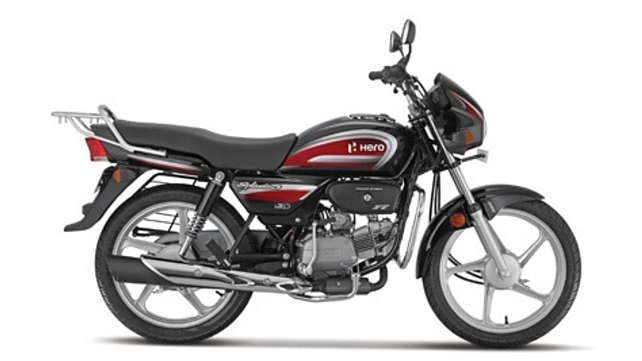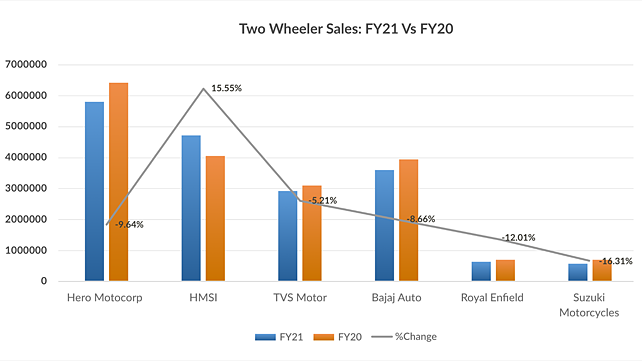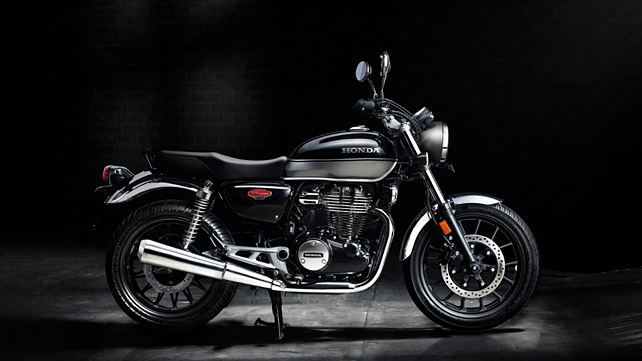
The world’s largest two-wheeler market continues to remain under pressure as domestic sales extended its negative slide, largely because of dampened demand for entry-level motorcycles. In many cases, it has been observed that lower-middle class and middle-class families have either postponed or even cancelled their planned purchase due to uncertain employment and income.
The entry-level segment of the two-wheeler industry contributes up to 85% of the total domestic sales of two-wheelers.
“That FY21 will be another year of contraction was a known fact as there was a complete washout of domestic sales for the first quarter due to COVID-induced lockdown. However, on the flip side, the COVID fear has pushed public transport users to purchase two-wheelers for their office commutes,” said Ritu Goswami, Senior Analyst, ICRA.
While there is a massive contraction in sales of entry-level products, the demand for two-wheelers is largely from a new set of customers, who are now focusing on personal mobility, she stated.
A similar trend has also been spotted in retail sales. Vinkesh Gulati, President, Federation of Automobile Dealers Association (FADA) said, “There is a severe impact on the incomes of the lower middle class, which were the primary customers of entry-level motorcycles.”

In fact, barring December, two-wheeler sales have been in the negative during the full fiscal year. Apart from the entry-level segment, the discretionary purchase of performance and luxury motorcycles too saw latency in demand due to economic factors and rising fuel prices.
Going forward, the only silver lining in the two-wheeler market is the demand coming from rural and agricultural sectors, as incomes in these sectors have had a very minimal impact. The urban demand, meanwhile, will continue to face the heat, impacting sales of scooters in the coming months, highlighted Rohan Kanwar Gupta, Assistant Vice President, ICRA.
Credit rating agency ICRA estimates the two-wheeler segment to see 16-18% rise in sales in the next fiscal year largely because of the low base effect.
Company-Wise Sales
Hero MotoCorp, the largest seller of entry-level motorcycles like Splendour, saw a decline of 9.6% to close at 57,91,539 units in FY21 as compared to 64,09,719 units in FY20. According to the company, the sale was largely impacted due to lockdown and rise in the cost of vehicles due to BS-VI transition.
The second largest two-wheeler manufacturer, Honda Motorcycles and Scooters India (HMSI) saw a rise of 15.6% to close FY21 at 47,06,572 units as against 40,73,182 units in FY20.

Giving an overview of the last fiscal, a company release quoted Yadvinder Singh Guleria, Director – Sales & Marketing, HMSI as saying, “FY21 was a year of unprecedented uncertainties. Honda resiliently overcame challenges from lockdowns to unlocks, while continuing to create many new firsts.” India became the epicentre of Honda’s two global unveilings, the H’ness CB 350 & CB350 RS, followed by the Indian debut of CB500X & CB 650R. HMSI led the recovery as the highest growth driver of two-wheeler industry in Q4FY21.
Chennai based TVS Motors, whose sales largely comes from the below 100 cc moped segment, slipped by 5.2% to close at 29,28,000 units in FY21 compared to 30,89,000 units sold in FY20. Similarly, Bajaj Auto saw a decline of 8.6% in sales at 36,05,893 units in FY21, when compared to 39,47,568 units in FY20.